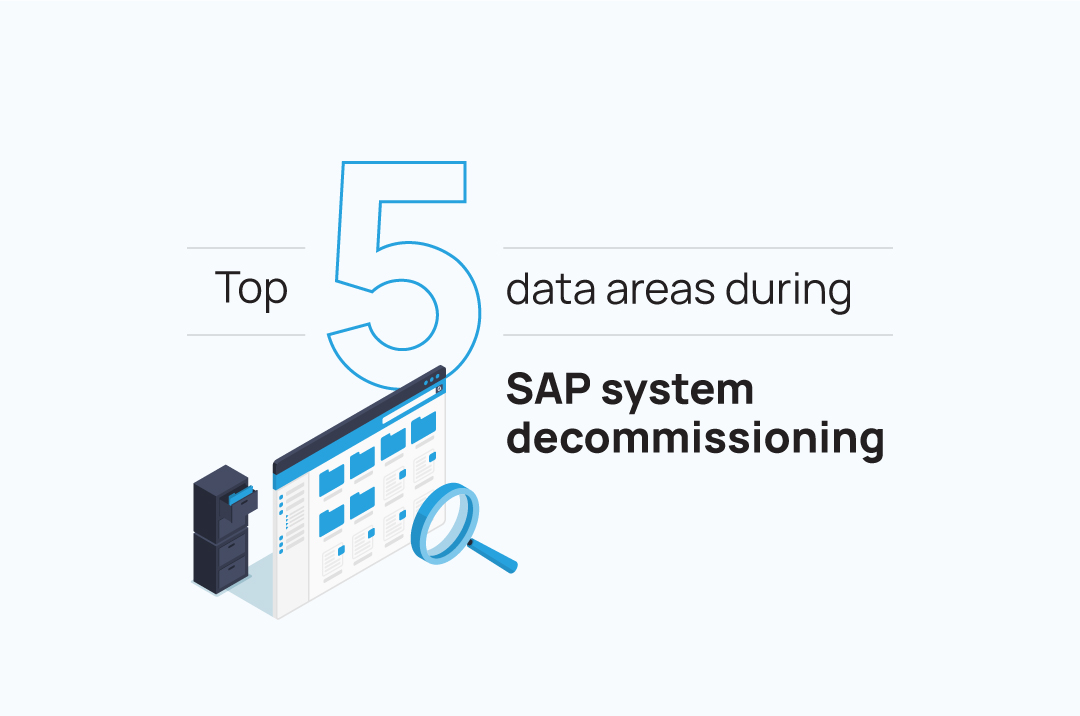Introduction
SAP system decommissioning refers to the process of retiring or retiring SAP systems that are no longer needed or relevant for an organization’s operations. It involves systematically removing and shutting down SAP landscapes, including servers, databases, and associated applications, in a controlled and planned manner.
Here are the top five areas that must not be overlooked during a SAP system decommissioning. These areas form the basis for being able to prove the completeness of archiving at the end. Cluster tables, GOS documents, and ADK files, in particular, are always a challenge.
1. Cluster Tables
SAP cluster tables are special database tables in SAP systems that are optimized for storing large amounts of data. Cluster tables are designed to provide high performance in processing data, particularly in applications that require a high number of read and write accesses.
Unlike regular database tables that are stored in individual records, cluster tables store multiple records in a single block or cluster. This can reduce access times to the data in the table, as fewer read and write operations are required to read or write a group of records.
Cluster tables are often used in SAP applications that need to process a high volume of transactions or large amounts of data, such as in materials management or finance. By using cluster tables, these applications can achieve better performance and faster processing of data.
2. GOS Document
GOS (Generic Object Services) Documents refer to a feature in SAP that allows users to attach documents, notes, and other types of files to various objects in the system, such as orders, customers, or materials. This functionality can be accessed through the GOS toolbar, which appears as a button in various transaction codes in SAP.
With GOS Documents, users can easily attach files to an object, view or edit existing attachments, and even create and send emails with attachments directly from SAP. These files can be of various types, including Microsoft Office documents, images, PDFs, and other file formats.
By using GOS Documents, users can streamline their work processes and reduce the need for external file storage systems or manual tracking of documents. They can also ensure that all relevant information is stored in one place and easily accessible to authorized users.
3. ADK Object
ADK (Archiving Data Consistency) objects are special objects in SAP systems that are used for archiving data. With these objects, users can archive and store data from various SAP applications to improve system performance and save storage space.
ADK objects contain information about the archived data, such as the archiving area, archiving key, and archiving status. These objects also ensure that the archived data remains consistent and integrated, and can be retrieved at any time.
Generally, ADK objects are used in SAP systems to archive large amounts of data that are no longer required on a regular basis but must be retained for compliance and audit purposes. Archiving this data can help systems operate faster and free up storage space while keeping the data available for future requirements.
To use ADK objects in SAP systems, users must first define an archiving strategy and create corresponding archiving profiles that can then be used in SAP applications.
4. All SAP Tables - Business Objects
SAP tables are database tables in SAP systems that are used to store and manage data for various applications and processes. These tables contain specific data fields that are needed for each application.
There are thousands of SAP tables used for different applications and modules in SAP systems.
Each SAP table has a unique name and structure specific to the application for which it is used. The tables can also be linked to each other to allow for the use of data across different applications.
To access SAP tables, users can use special transaction codes in SAP or access the tables through the database management tools.
5. Documents and Toa Tables
TOA (SAP Document Management System) tables in SAP are special database tables that are used for managing documents in SAP systems. With these tables, users can store and manage documents in various formats, such as Microsoft Office documents, images, PDFs, and other file types.





Comments